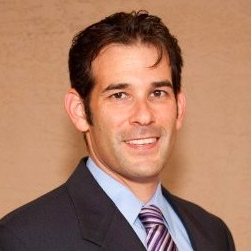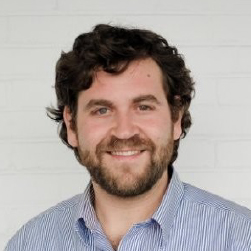Mobile Home Park Case Study: Frontier Urban Village
How to Generate a 24% IRR While Revitalizing an Affordable Community
16551 SE 82nd Dr, Clackamas, OR 97015
44 unit mobile home park / 55+ age-restricted community
We bought Frontier Urban Village, a 44 unit 55+ manufactured housing community, for $2,725,000 in 2018. It just appraised at $5,360,000–i.e. double what we paid for it.
If we sold it today at the appraised value, we’d generate a 24% IRR and a 2.7x equity multiple for investors.
In other words: We doubled the value of this asset over our four year hold period–and nearly tripled the value of our equity. And we did this while increasing the supply of high-quality affordable housing in a market that sorely needs it.
How did we do it?
Here are ten ways that our team at Three Pillar Communities created value for our Residents and Investors at Frontier Urban Village.
- Off-market deal sourcing. A carnival family owned this park for 50 years before we bought it. They went incommunicado for a few days during the escrow because they were setting up carnival rides at a county fair. When Yoel Kelman and I bought the park from them there were no other buyers at the table.

2. Investing based on fundamentals. Location, location, location. You can buy a mobile home park for pennies on the dollar, but if it’s in a location that doesn’t have robust housing demand relative to supply, you’re unlikely to hit a grand slam. Portland’s median home price is over $500k, and the market is chronically under-supplied due to Oregon land use policy. When looking at Frontier, we realized that this 1960s vintage mobile home park could serve as an affordable “urban village” for active seniors (age 55 and up), because it is across from a bus stop, adjacent to grocery-anchored retail, and walking distance to parks and amenities. Location makes or breaks a real estate deal. This park had an attractive location within a fundamentally attractive market.
3. Creating a safe, livable community. I hate talking about drug dealers and criminal elements–because that is not what manufactured housing is about! So I will just say that due to the prior owner’s hands-off management approach, there were a handful of residents at the park who compromised the health and safety of everyone else. We invested time and money to deal with this–including installing new lighting, new fencing, security cameras, and paying a lot of attorney’s fees–and I am proud that under our management our residents now enjoy a safe, livable community.
- Interestingly, I have gotten flack from some of my politically progressive friends for evicting bad actors from our communities, on the theory that “everyone needs a place to live” and we are unfairly displacing criminal elements. That’s hogwash. This line of thinking is offensive to #mobilehomepark residents. Our residents deserve safety and livability. As park owners, we have a duty to our residents to provide safety and livability, and that means we have a duty to our residents to enforce health and safety rules and to remove the tiny minority of residents who are unable or unwilling to comply with those rules.
4. Investing in infrastructure. We spent around $100,000 repaving the park to replace failed asphalt. We upgraded water lines and sewer lines. We invested this capital in order to ensure that Frontier will be a vibrant, viable community for another 50 years.

5. Expanding the unit count. We recommissioned two abandoned lots which we “found” by perusing old county records. We applied to the county to build even more lots but the county’s requirements were not economically feasible.
6. Replacing 1960s “trailers” with new, attractive manufactured homes. Through our manufactured home dealership, we brought new Fleetwood and Skyline homes into the park. These are attractive, energy-efficient one and two bedroom homes, popular with 55+ buyers looking to downsize.
7. Tiny homes….are tough. We installed a “tiny home” (i.e. a park model RV) in this park, on a lot which was too small to accommodate a full-sized manufactured home. Our take-away: Everyone loves watching tiny homes on TV, but not many people actually want to live in one. It requires a particular buyer.

8. Raising rents to market. In-place rents when we bought the park were $480. Our rents today average $687, and we have zero vacancies, with a long waiting list of 55+ adults who would love to live in our safe, attractive, affordable community. Renting an apartment near the park costs $1400 to $2800 per month, and buying a house starts at $500,000. As I have written previously (https://bit.ly/3BxUldA), different people will look at this same set of facts and draw wildly different conclusions. Some people (i.e. those who are focused on what things used to cost, instead of what things cost today) will criticize us for raising rents 43% since 2018. Other people will call us heroes for providing deeply affordable housing for $683 per month–a fraction of the cost of renting an apartment–while deeply improving this community for our residents through our investments in safety, livability, and infrastructure. Who’s right? You be the judge. Please post comment in the comments section.
9. Achieving management efficiency through regional scale. We own around 50 mobile home parks, including three parks within a 5 mile radius of Frontier. Having this scale enabled us to invest in a top-notch Community Manager at Frontier, who reports to a professional Oregon Regional Manager This would have been financially impossible if we only owned Frontier as a single 44-unit park.
10. Optimizing debt. Because we are conservative, we bought the park in 2018 with a 10 year fixed-rate CMBS loan for $1,500,000. On the plus side, we were insulated from interest rate volatility through 2028. On the negative side, CMBS loans incur a defeasance penalty (i.e. a big cash cost) if a borrower prepays them. As we executed our business plan over the years and increased the value of the park, we debated whether to stay in our original loan or to access the equity value we had created, by refinancing, and to eat the cost of the defeasance. Over the past few months, that answer became clear, and we are now refinancing at a $5,360,000 valuation, generating highly attractive net proceeds for our investors even after we pay the defeasance penalty.
If you found this case study helpful (or if you have any questions), please let me know in the comments section?
If folks find this helpful I might write a few more case studies on some of our other parks.
Best,
Daniel
























